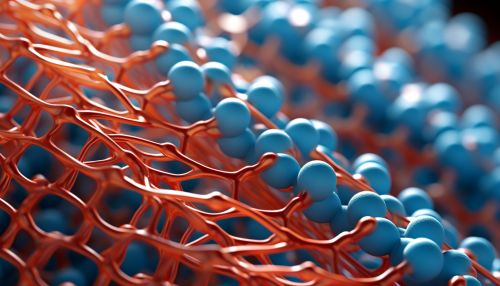P-ATPases
Introduction
P-type ATPases, also known as E1-E2 ATPases, are a large group of evolutionarily related ion transporters that are found in bacteria, archaea, and eukaryotes. They are responsible for the active transport of a variety of different ions across cellular membranes, which is essential for maintaining the electrochemical gradients that drive many cellular processes.
Structure and Function
P-ATPases are transmembrane proteins that are characterized by their structure, which typically includes a large cytoplasmic domain and several transmembrane helices. The cytoplasmic domain contains the sites for ATP binding and hydrolysis, while the transmembrane helices form the pathway for ion transport.


The function of P-ATPases is to transport ions across cellular membranes against their concentration gradients. This process is driven by the hydrolysis of ATP, which provides the energy needed for transport. The ions that are transported by P-ATPases include cations such as sodium (Na+), potassium (K+), calcium (Ca2+), and protons (H+), as well as anions such as chloride (Cl-).
Classification
P-ATPases are classified into five main types, known as P1-P5, based on their sequence homology and the type of ions they transport.
- P1-ATPases are primarily involved in the transport of heavy metal ions, such as copper and zinc. - P2-ATPases, which include the well-known Na+/K+-ATPase and Ca2+-ATPase, transport alkali and alkaline earth metal ions. - P3-ATPases have not been well characterized, but are thought to transport a variety of different ions. - P4-ATPases are involved in the transport of lipids across the lipid bilayer, a process known as lipid flipping. - P5-ATPases are the least well understood of the P-ATPases, but are thought to transport a variety of different substrates.
Mechanism of Action
The mechanism of action of P-ATPases involves a cycle of conformational changes known as the E1-E2 cycle. In the E1 state, the ATPase has a high affinity for the ion to be transported and ATP. Binding of the ion and ATP triggers a conformational change to the E2 state, in which the ATPase has a low affinity for the ion and ATP. This causes the ion to be released on the other side of the membrane, and the ATP to be hydrolyzed, providing the energy for the transport process.
Biological Significance
P-ATPases play a crucial role in a variety of biological processes. For example, the Na+/K+-ATPase is essential for maintaining the resting membrane potential in neurons, while the Ca2+-ATPase is involved in muscle contraction and other processes that require rapid changes in calcium concentration. Defects in P-ATPases can lead to a variety of diseases, including neurological disorders, cardiovascular diseases, and cancer.
See Also
- Ion Transport Proteins - Active Transport - ATP Hydrolysis - Membrane Potential - Neurological Disorders
